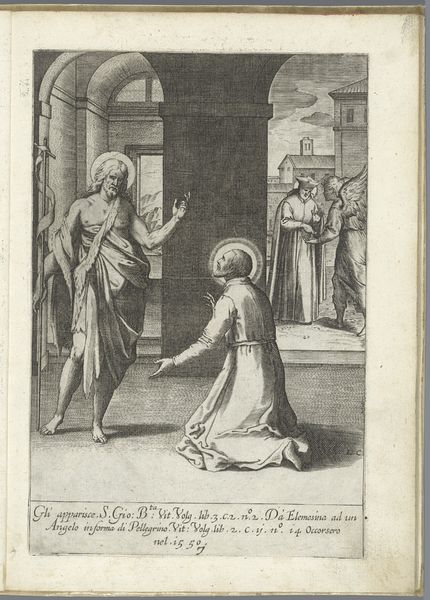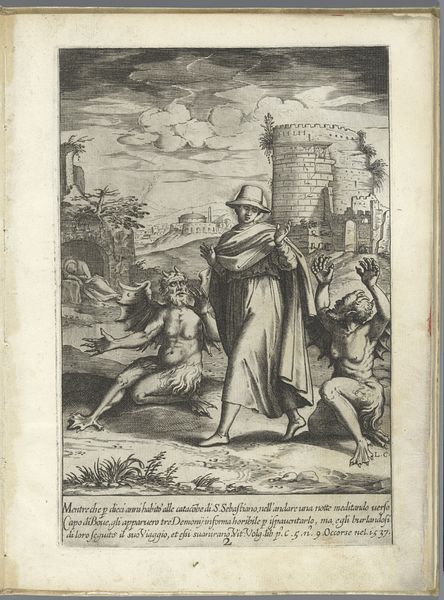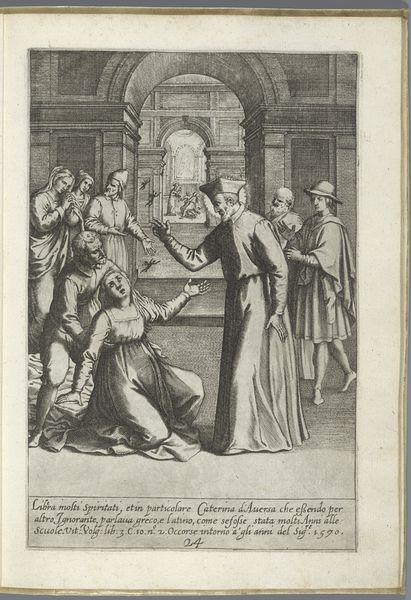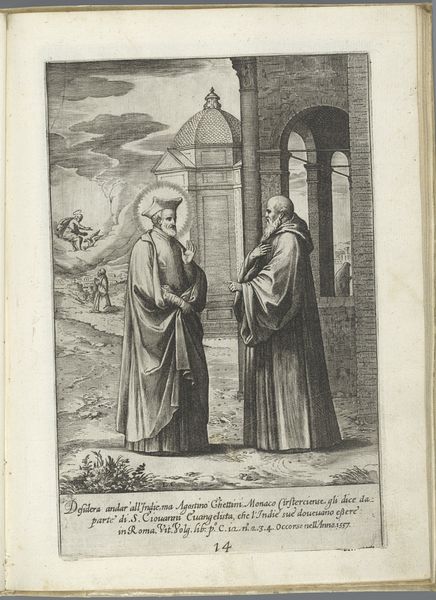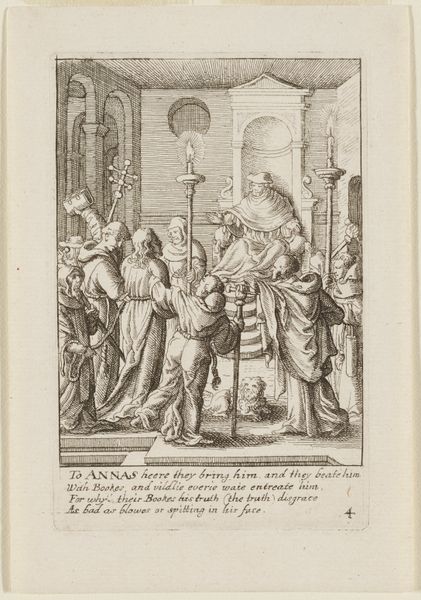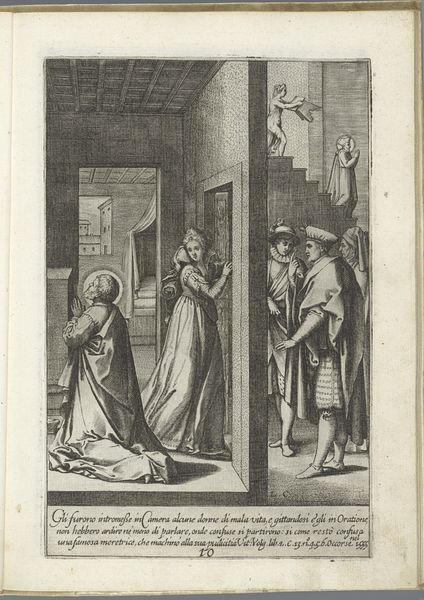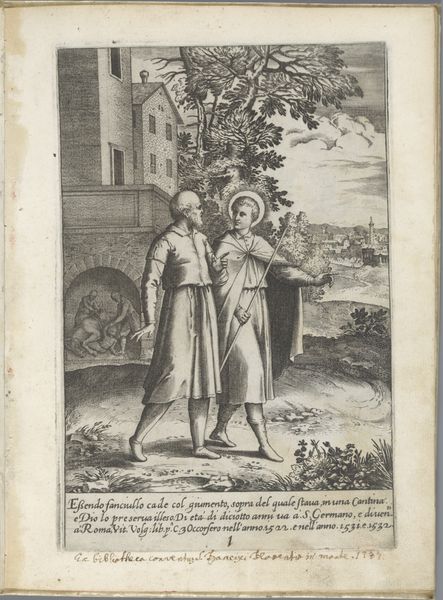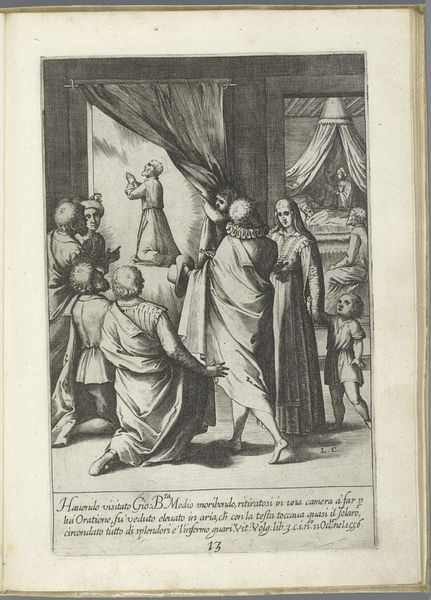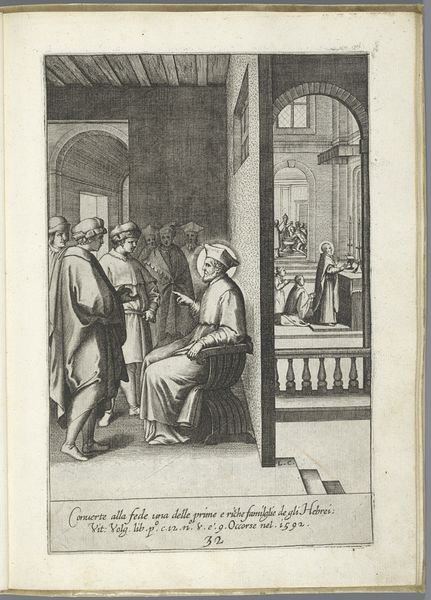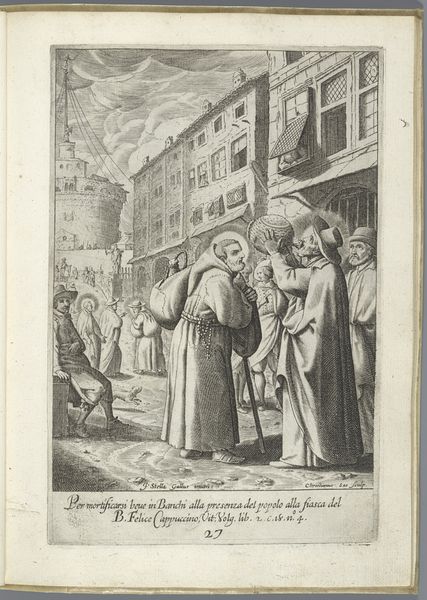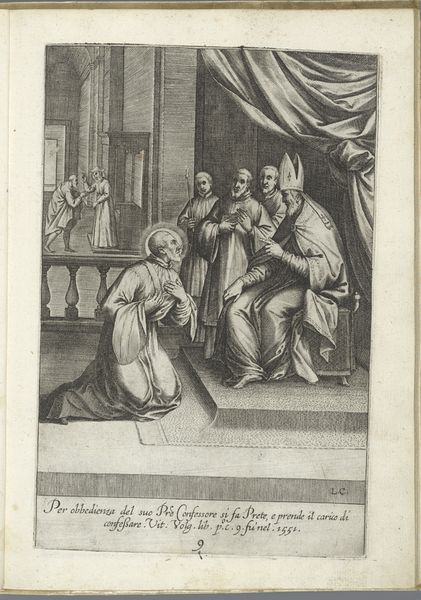
print, engraving
#
narrative-art
#
baroque
# print
#
figuration
#
history-painting
#
engraving
Dimensions: height 228 mm, width 150 mm
Copyright: Rijks Museum: Open Domain
Editor: This is "Filippo Neri sees the future of two men," an engraving by Luca Ciamberlano, created sometime between 1630 and 1641. It's housed in the Rijksmuseum. The scene feels very staged, almost like a theatrical production, especially with the architectural backdrop. What compositional elements stand out to you? Curator: Immediately, I observe the stark contrast created by the strategic use of light and shadow. Notice how Ciamberlano directs our gaze using line. The lines of the architecture – the arches, the columns – converge, creating a sense of depth. What effect does that have, combined with the composition of figures? Editor: I see, it pushes our focus toward Filippo Neri. His posture and the placement of his hand leading towards the two kneeling men directs attention to that interaction. So, the lines create depth and highlight the main action? Curator: Precisely. Further analysis of the engraving reveals how Ciamberlano uses a limited palette to maximize visual impact. The variations in texture, created solely through the density and direction of the engraved lines, are crucial. Does the limited use of color lessen the symbolic interpretation in your view? Editor: I initially thought so, but the varied use of light does bring out depth in the garments of the figures which in turn seems to help reveal details such as facial expression. I guess the composition supersedes the use of color here. Curator: Indeed, through an austere style, a captivating visual experience has been constructed, highlighting the central subject in an appealing way. Editor: I see what you mean; now I understand the engraving is more about the structural composition than symbolism, as I first thought. Curator: This close examination allows for the appreciation of formal elements.
Comments
No comments
Be the first to comment and join the conversation on the ultimate creative platform.
